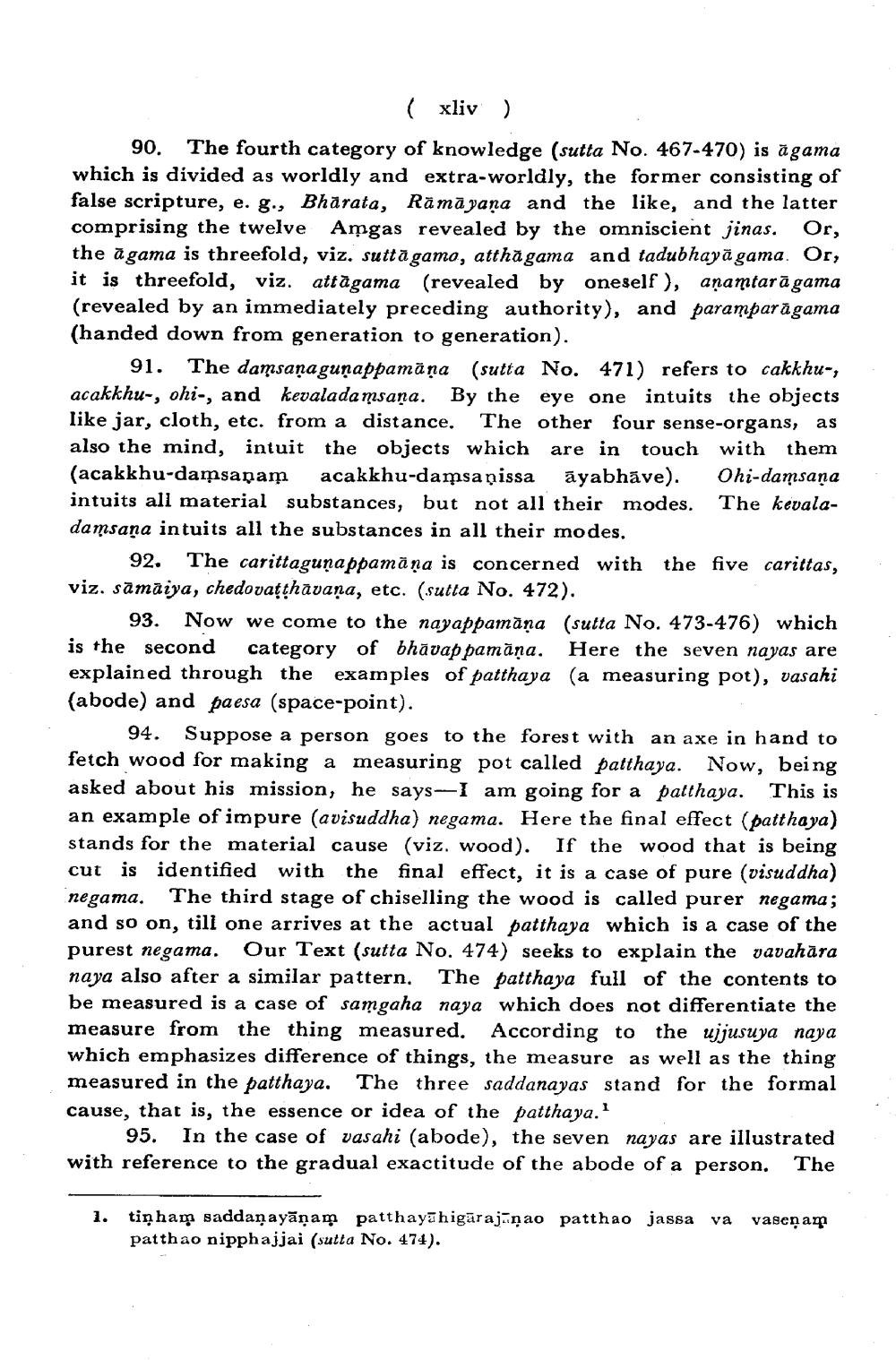________________
(
xliy
)
90. The fourth category of knowledge (sutta No. 467-470) is agama which is divided as worldly and extra-worldly, the former consisting of false scripture, e. g., Bharata, Rāmāyana and the like, and the latter comprising the twelve Amgas revealed by the omniscient jinas. Or, the ā gama is threefold, viz. suttā gamo, atthāgama and tadubhayā gama. Or, it is threefold, viz. attāgama (revealed by oneself), anamtarā gama (revealed by an immediately preceding authority), and paramparāgama (handed down from generation to generation).
91. The damsaņagunappamāņa (sutta No. 471) refers to cakkhu-, acakkhu-, ohi-, and kevaladamsana. By the eye one intuits the objects like jar, cloth, etc. from a distance. The other four sense-organs, as also the mind, intuit the objects which are in touch with them (acakkhu-damsanam acakkhu-damsanissa āyabhāve). Ohi-damsaņa intuits all material substances, but not all their modes. The kevaladamsana intuits all the substances in all their modes.
92. The carittagunappamāṇa is concerned with the five carittas, viz. sāmaiya, chedovatthāvana, etc. (sutta No. 472).
93. Now we come to the nayappamāņa (sutta No. 473-476) which is the second category of bhāvap pamāņa. Here the seven nayas are explained through the examples of patthaya (a measuring pot), vasahi (abode) and paesa (space-point).
94. Suppose a person goes to the forest with an axe in hand to fetch wood for making a measuring pot called patthaya. Now, being asked about his mission, he saysI am going for a patthaya. This is an example of impure (avisuddha) negama. Here the final effect patthaya) stands for the material cause (viz. wood). If the wood that is being cut is identified with the final effect, it is a case of pure (visuddha) negama. The third stage of chiselling the wood is called purer negama; and so on, till one arrives at the actual patthaya which is a case of the purest negama. Our Text (sutta No. 474) seeks to explain the vavahāra naya also after a similar pattern. The patthaya full of the contents to be measured is a case of samgaha naya which does not differentiate the measure from the thing measured. According to the ujjusuya naya which emphasizes difference of things, the measure as well as the thing measured in the patthaya. The three saddanayas stand for the formal cause, that is, the essence or idea of the patthaya.
95. In the case of vasahi (abode), the seven nayas are illustrated with reference to the gradual exactitude of the abode of a person. The
1. tinham saddaņayāņam patthayā higārajāņao patthao jassa va vasenam
patthao nipphajjai (sutta No. 474).




